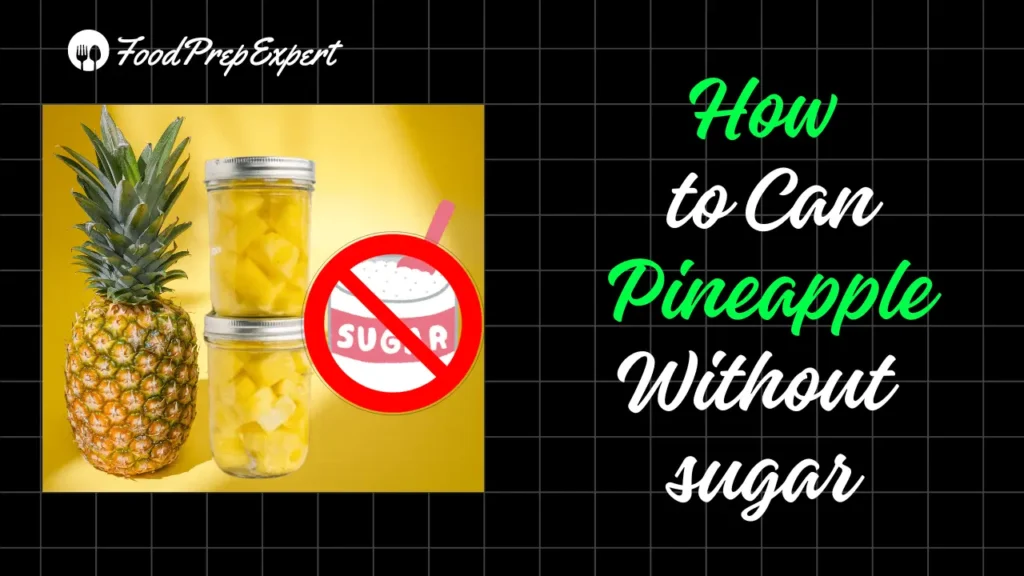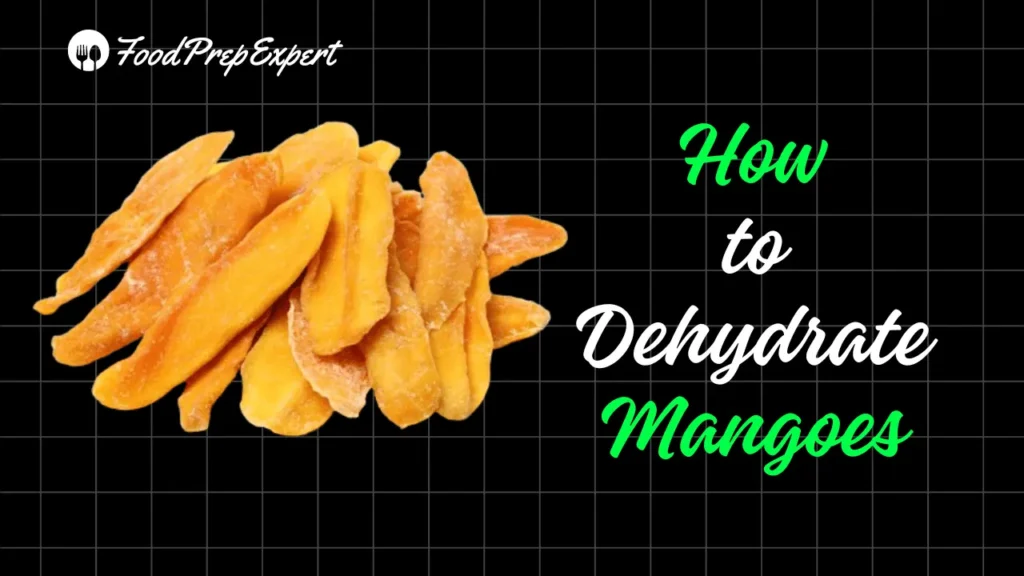Best 5 Fruits to Dehydrate for Healthy Snacking in 2024

In today’s world, healthy snacking is more important than ever. But ditch the processed options and sugary treats. From this article, you’ll know the best fruits to dehydrate. Dehydrating fruit offers a delicious and nutritious way to fuel your body on the go. This article explores the best 5 fruits to dehydrate in 2024, focusing not just on taste, but on the specific health trends of the year. From gut-friendly berries to heart-healthy apples, discover each fruit’s unique benefits, and practical tips for dehydrating.
Berries (Strawberries, Blueberries, Raspberries)
Berries like Strawberries, Blueberries, and Raspberries are antioxidant powerhouses. They’re packed with anthocyanins, which fight free radical damage, and vitamin C, essential for immunity. Just a cup provides a good chunk of your daily fiber needs, promoting gut health and keeping you feeling fuller for longer. It’s high in nutrients and low in calories, making berries perfect for mindful snacking in 2024.
When choosing berries for dehydrating, aim for ripe but firm. Soft berries will flatten and become sticky during drying. Gently rinse your berries in a colander under cool running water. Avoid soaking, as this can lead to mushiness. Spread them on a clean paper towel to dry completely before dehydrating. This ensures even drying and prevents mold growth during the process.
How to Dehydrate Berries in a Dehydrator
- Wash your berries gently under cool running water. Pat them dry completely with a paper towel. Aim for ripe but firm berries – mushy ones will get sticky.
- For even drying, slice your berries into uniform pieces. Strawberries can be halved or quartered, while blueberries and raspberries can be left whole.
- Arrange the berries in a single layer on your dehydrator trays, leaving space between each piece for air circulation. Set the temperature to 130°F (54°C) and dry for 4-8 hours, depending on the size and juiciness of your berries.
- Check on your berries periodically. They’re done when shrunken, leathery, and no longer moist to the touch. A slight bend should feel pliable, not mushy.
- Once dry, let the berries cool completely on the dehydrator trays before storing them.
How to Dehydrate Berries in oven
- Follow the same berry prep steps as for the dehydrator (washing, drying, slicing).
- Line a baking sheet with parchment paper. Spread your berries in a single layer, making sure they don’t touch.
- Preheat your oven to its lowest setting (ideally around 150°F or 65°C). Important! Most ovens don’t go this low, so keep the oven door slightly ajar with a wooden spoon to allow moisture to escape.
- Dry the berries for 4-8 hours, checking on them every hour or so. Rotate the baking sheet occasionally for even drying.
- The berries should be shrunken, leathery, and slightly pliable when bent.
- Once dry, let the berries cool on the baking sheet before storing them.
How to Dehydrate Berries in an Air-Fryer
- Same as dehydrator and oven methods (wash, dry, slice).
- Arrange the berries in a single layer on your air fryer basket. Avoid overcrowding.
- If your air fryer has a dehydrating function, use that setting. Otherwise, use the lowest temperature setting available (ideally around 130°F or 54°C).
- Dry the berries for 2-4 hours, checking on them every 30 minutes. Rotate the basket occasionally for even drying.
- The berries should be shrunken, leathery, and slightly pliable when bent.
- Once dry, let the berries cool completely in the air fryer basket before storing them.
Apples
Apple delivers a good dose of dietary fiber, keeping you feeling fuller for longer and aiding digestion. They’re also rich in vitamin C, essential for a healthy immune system. But that’s not all. Apples boast flavonoids, powerful antioxidants that fight free radicals and protect your cells. So, by dehydrating apples, you concentrate these nutrients, creating a delicious snack packed with goodness for your body.
When choosing apples for dehydrating, ditch the super sweet varieties and opt for tart apples like Granny Smith or Braeburn. These hold their shape better and have a lower moisture content, leading to faster and more even drying. Now, for slicing – consistency is key. Aim for uniform thickness, around ¼ inch (6mm). This ensures all the apple slices dry at the same rate, preventing some from becoming burnt while others remain underdone. Use a mandoline slicer for perfect results.
How to Dehydrate Apples in a Dehydrator
- Wash your apples thoroughly and remove the cores. For faster drying, consider peeling them, but it’s not essential.
- Aim for uniform slices around ¼ inch (6mm) thick. A mandoline slicer is your best friend here, but a sharp knife works too!
- Optional Treatment: To prevent browning, you can dip the apple slices in a solution of lemon water (1 tablespoon lemon juice to 1 cup water) for a few minutes. Pat them dry completely before dehydrating.
- Arrange the apple slices in a single layer on your dehydrator trays, leaving space for air circulation. Set the temperature to 130°F (54°C) and dry for 6-10 hours, depending on the thickness of your slices.
- Check on your apple slices periodically. They’re done when they’re shrunken, leathery, and no longer moist to the touch. They should bend slightly without snapping.
- Once dry, let the apple slices cool completely on the dehydrator trays before storing them.
How to Dehydrate Apples in Oven
- Follow the same prep steps as for the dehydrator (washing, coring, slicing).
- Line a baking sheet with parchment paper. Spread your apple slices in a single layer, making sure they don’t touch.
- Preheat your oven to its lowest setting (ideally around 150°F or 65°C). Important! Most ovens don’t go this low, so keep the oven door slightly ajar with a wooden spoon to allow moisture to escape.
- Dry the apple slices for 6-10 hours, checking on them every hour or so. Rotate the baking sheet occasionally for even drying.
- The apple slices should be shrunken, leathery, and slightly pliable when bent.
- Once dry, let the apple slices cool on the baking sheet before storing them.
How to Dehydrate Apples in an Air Fryer
- Same as dehydrator and oven methods (wash, core, slice).
- Arrange the apple slices in a single layer on your air fryer basket. Avoid overcrowding.
- If your air fryer has a dehydrating function, use that setting. Otherwise, use the lowest temperature setting available (ideally around 130°F or 54°C).
- Dry the apple slices for 3-5 hours, checking on them every 30 minutes. Rotate the basket occasionally for even drying.
- Similar to the other methods, check for doneness with the bend test. The apple slices should be shrunken, leathery, and slightly pliable when bent.
- Once dry, let the apple slices cool completely in the air fryer basket before storing them.
Bananas
Bananas are nature’s energy bar. Packed with potassium, a crucial mineral for muscle function and proper nerve signaling, they provide a quick and natural energy boost. Unlike processed sugary snacks, bananas boast natural sugars that your body can readily use for fuel. They’re also a good source of dietary fiber, keeping you feeling fuller for longer and aiding digestion. So, by dehydrating bananas, you concentrate these benefits into a convenient, portable snack, perfect for pre-workout fuel or a healthy treat anytime.
Not all bananas are created for dehydrating. Skip the mushy brown ones – you want ripe but firm bananas. These have the ideal balance of sweetness and structure. Soft bananas will turn into sticky clumps during drying. Look for bananas with mostly yellow skin and maybe a hint of brown speckling. A gentle squeeze should feel slightly firm, not mushy. These firm bananas will dehydrate into chewy, flavorful snacks that won’t leave your fingers feeling glued together!
How to Dehydrate Bananas in a Dehydrator
- Peel your bananas and slice them into rounds about ¼ inch (6mm) thick. Aim for uniform slices for even drying.
- Optional: To prevent browning, you can dip the banana slices in a mixture of 1 tablespoon of lemon juice to 1 cup of water for a few minutes. Drain well before dehydrating.
- Arrange the banana slices in a single layer on your dehydrator trays, leaving space between each piece for air circulation. Set the temperature to 130°F (54°C) and dry for 6-8 hours, depending on the thickness of your slices.
- Check on your bananas periodically. They’re done when they’re shrunken, leathery, and no longer moist to the touch. They should bend slightly, not snap.
- Once dry, let the banana slices cool completely on the dehydrator trays before storing them.
How to Dehydrate Bananas in oven
- Follow the same banana prep steps as for the dehydrator (peeling, slicing). Optional: use the lemon juice dip to prevent browning.
- Line a baking sheet with parchment paper. Spread your banana slices in a single layer, making sure they don’t touch.
- Preheat your oven to its lowest setting (ideally around 150°F or 65°C). Important! Most ovens don’t go this low, so keep the oven door slightly ajar with a wooden spoon to allow moisture to escape.
- Dry the bananas for 6-8 hours, checking on them every hour or so. Rotate the baking sheet occasionally for even drying.
- The banana slices should be shrunken, leathery, and slightly pliable when bent.
- Once dry, let the banana slices cool on the baking sheet before storing them.
How to Dehydrate Bananas in an Air Fryer
- Same as dehydrator and oven methods (peeling, slicing, optional lemon juice dip).
- Arrange the banana slices in a single layer on your air fryer basket. Avoid overcrowding.
- If your air fryer has a dehydrating function, use that setting. Otherwise, use the lowest temperature setting available (ideally around 130°F or 54°C).
- Dry the bananas for 3-5 hours, checking on them every 30 minutes. Rotate the basket occasionally for even drying.
- Check like the above and you’ll know when it’s done.
Mango
Mangoes are a tropical treasure trove of vitamins. They’re bursting with vitamin A, essential for healthy vision and immunity. Vitamin C also gets a starring role, acting as an antioxidant to fight free radicals and support overall health.
When picking mangoes for dehydrating, resist the urge to grab the softest ones. You want ripe but firm mangoes. These beauties have a beautiful fragrance and a slight give when pressed gently, but they shouldn’t be mushy. Soft mangoes will collapse during drying and become sticky messes. Look for mangoes with vibrant yellow skin, perhaps with a hint of red or orange blush. Avoid any green patches, which indicate unripeness. These firm mangoes will dehydrate into chewy, flavorful treats packed with all the goodness nature has to offer.
How to Dehydrate Mango in a Dehydrator
- Wash your mango, pat it dry, and slice off the peel. Use a sharp knife to remove the pit, then cut the flesh into thin slices – around ¼ inch (6mm) thick. Aim for uniform slices for even drying.
- To prevent sticking, dip the mango slices briefly in a solution of lemon water (1 tsp lemon juice to 1 cup water). Alternatively, you can toss them lightly in a thin layer of coconut flour or ground cinnamon.
- Arrange the mango slices in a single layer on your dehydrator trays, leaving space between each piece for air circulation. Set the temperature to 135°F (57°C) and dry for 6-12 hours, depending on the thickness of your slices.
- Check on your mangoes periodically. They’re done when they’re shrunken, leathery, and pliable when bent. They shouldn’t feel sticky or moist to the touch.
- Once dry, let the mango slices cool completely on the dehydrator trays before storing them.
How to Dehydrate Mango in Oven
- Same as the dehydrator method (wash, dry, slice, pre-treat with lemon water or a light dusting of coconut flour/cinnamon).
- Line a baking sheet with parchment paper. Spread your mango slices in a single layer, making sure they don’t touch.
- Preheat your oven to its lowest setting (ideally around 150°F or 65°C). Important! Most ovens don’t go this low, so keep the oven door slightly ajar with a wooden spoon to allow moisture to escape.
- Dry the mangoes for 6-12 hours, checking on them every hour or so. Rotate the baking sheet occasionally for even drying.
- Use the same test as with the dehydrator to determine when it’s done.
- Once dry, let the mango slices cool on the baking sheet before storing them.
How to Dehydrate Mango in an Air Fryer
- Likewise the dehydrator and oven methods (wash, dry, slice, pre-treat).
- Arrange the mango slices in a single layer on your air fryer basket. Avoid overcrowding.
- If your air fryer has a dehydrating function, use that setting. Otherwise, use the lowest temperature setting available (ideally around 135°F or 57°C).
- Dry the mango slices for 4-8 hours, checking on them every 30 minutes. Rotate the basket occasionally for even drying.
- The mango slices should be shrunken, leathery, and slightly pliable when bent.
- Once dry, let the mango slices cool completely in the air fryer basket before storing them.
Kiwifruit
Kiwifruit is a superstar for gut health. It’s loaded with vitamin C, a vital nutrient for a strong immune system. But kiwifruit goes beyond just immunity. It’s a great source of dietary fiber, keeping you feeling satisfied and promoting healthy digestion. The secret weapon? Kiwifruit boasts a unique enzyme called actinidin, which helps break down protein during digestion. By dehydrating kiwifruit, you concentrate these benefits into a delicious snack that supports your gut health and overall well-being.
Picking the perfect kiwifruit for dehydrating is all about finding the sweet spot between ripe and mushy. Opt for ripe but firm kiwifruit. These gems will have a slight give when gently pressed but won’t be soft or yielding. Skip the kiwifruit with extensive wrinkling or brown spots, as these indicate overripeness and will lead to mushy, sticky dehydrated pieces. Look for smooth, vibrant skin with a slight halo of softness around the stem.
How to Dehydrate Kiwifruit in a Dehydrator
- Wash your kiwifruit thoroughly and pat them dry with a paper towel. Peel them carefully, or leave the skin on for extra fiber (wash the skin thoroughly if keeping it).
- Consistency is key. Slice your kiwifruit into thin, uniform rounds (around 1-2 millimeters thick). This ensures even drying throughout.
- Arrange the kiwi slices in a single layer on your dehydrator trays, leaving space between each piece for air circulation. Set the temperature to 135°F (57°C) and dehydrate for 6-12 hours, depending on the thickness of your slices and your desired level of dryness. Thicker slices or a chewier texture will require longer drying time.
- Give your kiwi slices a gentle press. They’re done when they’re leathery and flexible, but not sticky. There should be no moisture visible when you pinch them.
- Once dry, let the kiwi slices cool completely on the dehydrator trays before storing them.
How to Dehydrate Kiwifruit in Oven
- Follow the same washing, drying, and slicing steps as for the dehydrator method.
- Line a baking sheet with parchment paper. Spread your kiwi slices in a single layer, making sure they don’t touch.
- Preheat your oven to its lowest setting (ideally around 150°F or 65°C). Important! Most ovens don’t go this low, so keep the oven door slightly ajar with a wooden spoon to allow moisture to escape.
- Dry the kiwi slices for 4-8 hours, checking on them every hour or so. Rotate the baking sheet occasionally for even drying.
- The kiwi slices should be leathery and flexible, not sticky.
- Once dry, let the kiwi slices cool on the baking sheet before storing them.
How to Dehydrate Kiwifruit in an Air Fryer
- Same as dehydrator and oven methods (wash, dry, slice thinly).
- Arrange the kiwi slices in a single layer on your air fryer basket. Avoid overcrowding.
- If your air fryer has a dehydrating function, use that setting. Otherwise, use the lowest temperature setting available (ideally around 130°F or 54°C).
- Dry the kiwi slices for 2-4 hours, checking on them every 30 minutes. Rotate the basket occasionally for even drying.
- Check like the above and you’ll know when it’s done.
- Once dry, let the kiwi slices cool completely in the air fryer basket before storing them.
FAQS
Q1. What are the top fruits for dehydrating in 2024?
Berries (gut health), apples (heart health), bananas (natural energy boost), mangoes (vitamins A & C), and kiwifruit (digestion).
Q2. What’s the benefit of dehydrating fruit over fresh fruit?
Dehydration concentrates nutrients, creates portable snacks, and intensifies flavors.
Q3. Do I need a dehydrator to dry fruit?
While a dehydrator offers consistent results, you can also use an oven (low temperature) or air fryer (dehydrating function) with some adjustments.
Q4. How long does it take to dehydrate fruit?
Drying time varies depending on the fruit, thickness, and method used. Expect 4-8 hours for most fruits in a dehydrator.
Q5. How do I store dehydrated fruit?
Store dehydrated fruit in airtight containers in a cool, dark place. They’ll stay fresh and delicious for up to a year!







